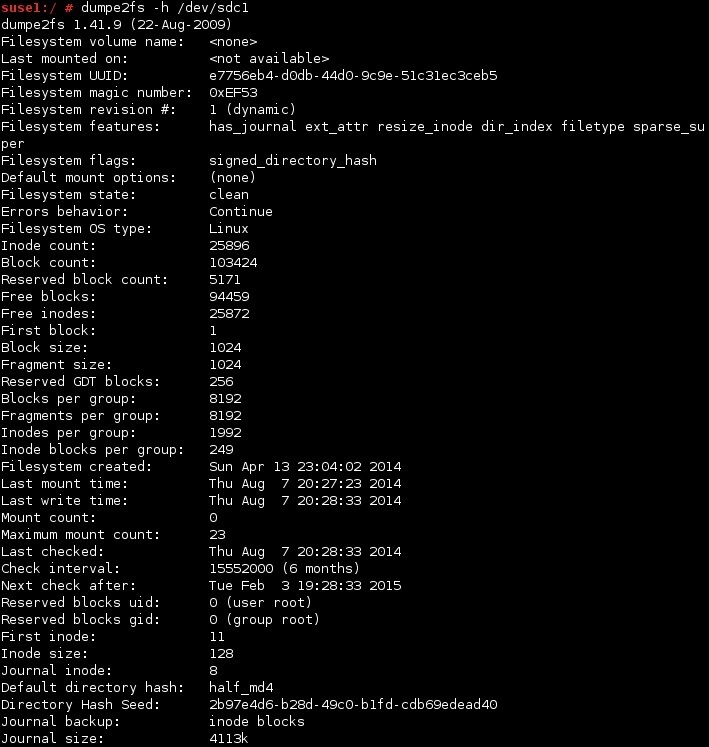https://geek-university.com/linux/obtain-file-system-information/
To obtain information about your ext2, ext3 or ext4 file system, you can use the dumpe2fs command. This command is most often used with the -h option, which causes the utility to omit information about group descriptors. dumpe2fs shows some useful information about the file system, such as:
- the mount point.
- the last time the file system was checked.
- file system OS type.
- number of inodes.
- journal information.
The syntax of the dumpe2fs is simple, you just type dumpe2fs, followed by the file system device name. Here is an example output:
An equivalent to dumpe2fs for XFS file systems is called xfs_info. Like dumpe2fs, this command provides useful information about the file system. To invoke the command, just type xfs_info, followed by the file system device name:
Another useful tool for XFS file systems is xfs_metadump. This program copies the file system’s metadata (filenames, file sizes, and so on) to a file. For example, xfs_metadump /dev/sda3 /xfs/xfs_dump copies the metadata to /xfs/xfs_dump:


